About 300 years ago, the ancestors of Sambas Sultanate have made woven fabric of sambas. It is said that this sambas weaving has been made women in Sambas Sultanate since Sultan Sulaiman founded this sultanate in 1675. In the past, Sambas weaving is used as a complement to the implementation of custom rituals, one of them in the wedding ritual.
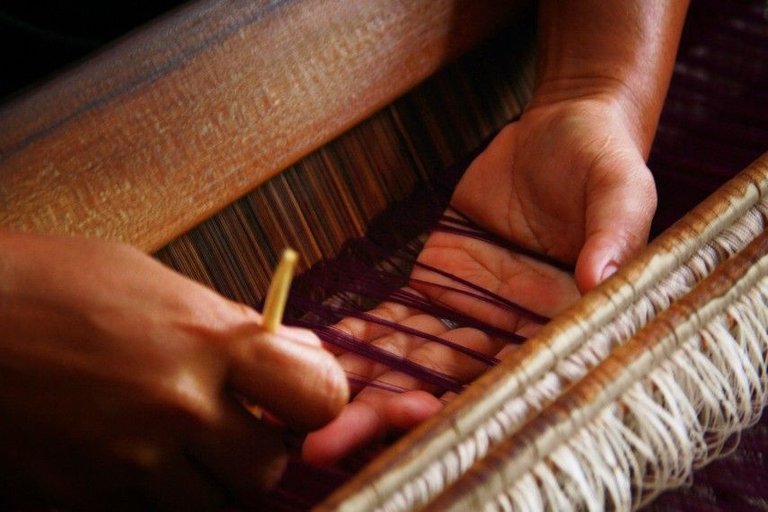
Until now the tradition of weaving in Sambas still continued by men and women. The making of woven fabrics known to the community there usually call it by weaving is usually done through the crossing process 2 sets of yarn by inserting the crosslinks yarns on the warp threads. But before the weaving process begins, first done the process of courage.

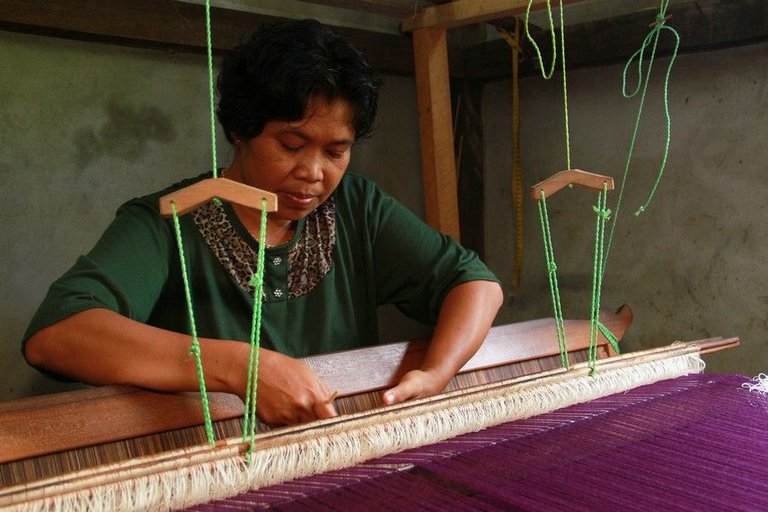
The process of brazing is the process of installing the lungsing threads parallel to each other on the loom according to the width of the woven fabric to be made. This loom serves to hold every strand of warp thread. While the feed yarn is inserted transversely between the warp threads.
The strands of yarn luncing and weft threads are in weaving with a cross pattern. The pattern of crossing these threads is called the webbing. There are 3 woven techniques in making woven fabrics, namely plain weave, satin weave, and woven keper.
Some of Sambas woven motifs include, pedada, elbows, elephant, lava, bamboo shoot, mole, flower, chicken eyes, banners, swirling wind, periak seeds, seven small jasmine flowers in the middle, flower cape, clove flower, malek flower and cangkring flower. "Motif shoot bamboo shoots using ordinary thread. For one field takes 15 days. While the thread should be spun, it took 2 months to put the sun and the reef, "said Rusna, one of the craftsmen.
The team of Indonesiakaya.com who visited Dusun Sulur Medan, Sumber Harapan Village, Sambas, saw directly the process of making Sambas woven cloth. Incidentally at that time Rusna was snapping motif shoot bamboo shoot different from Sumatra. A weaver according to Rusna, must be able to calculate the thread and understand the number of threads. Interestingly, to make the motive must memorize the formula, because it must be careful and can not be fast. On average it takes about a month, and depends on the difficulty of the motive.
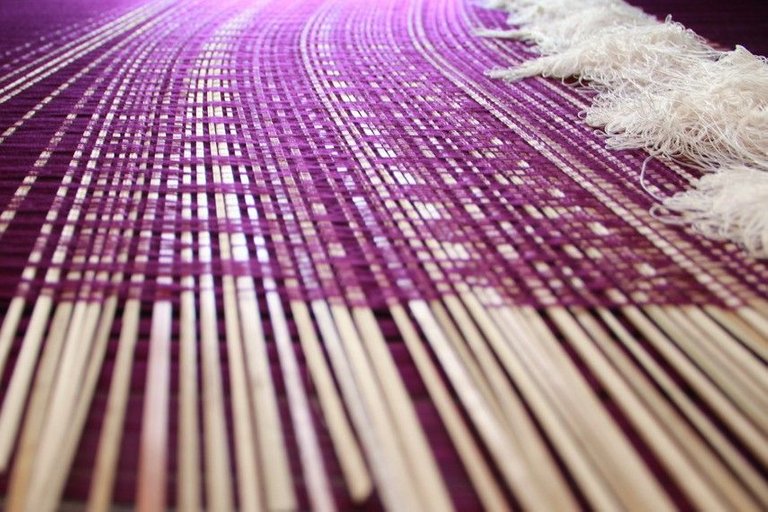
There are 19 motifs that have been patented, "said Diana a marketing weaving Sambas. However, the weaving depends on the order. Usually, a buyer comes and carries his own motive. "Weaving done, the motif that was brought was not the motive Sambas, finally we were trying to make the motif, by working with Sambas weaving techniques," explained Diana.
From one sheet of cloth, there are 4 people involved. "Their task is to throw the yarn, to dare, to stretch the yarn to roll on the board, to connect and to put the yarn to the bottom of a sheet by piece. Then there is another part that arranges the motive in the paper sketch, then just done in weaving, this process is called as suji dilang, "explained Diana. People who usually buy Sambas woven cloth usually come directly from Singkawang and Pontianak. In addition, there are also tourists from Malaysia and Brunei Darussalam.
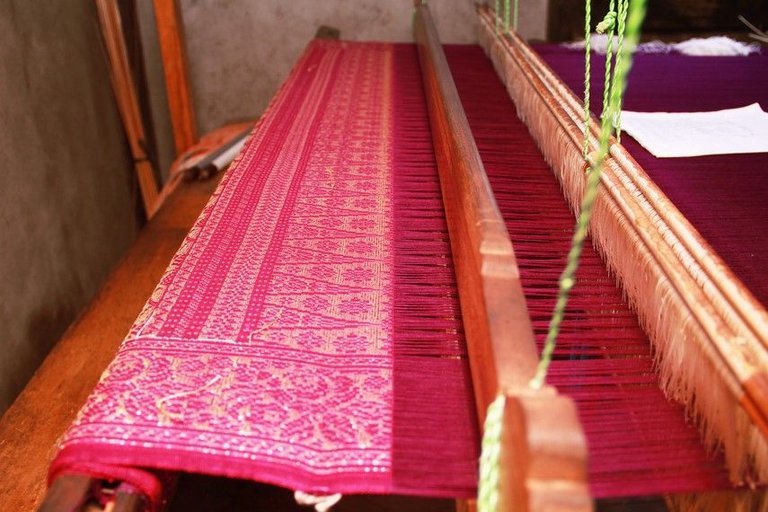
Rusna began to work on Sambas weaving since the age of 15 years. Then had worked as a weaver in Kampung Air, Brunei Darussalam. So also with the surrounding residents, taking turns working as a weaver in Brunei. Motifs done by Brunei motif, but with Sambas technique.
Sambas weaving price usually depends on the fabric, materials, and motives. Usual weaving prices range from Rp1,5 - Rp1,8 million each pair of cloth and scarf. For cotton made from cotton Rp2, 5 million and silk can reach Rp3, 5 million. "Usually a lot of fashion designers from Jakarta who order weaving Sambas, they come directly to Sumber Harapan Village and order certain motives," said Rusna, who besides having a busy work as a weaver, he also farms to plant rice and farms take rubber latex.
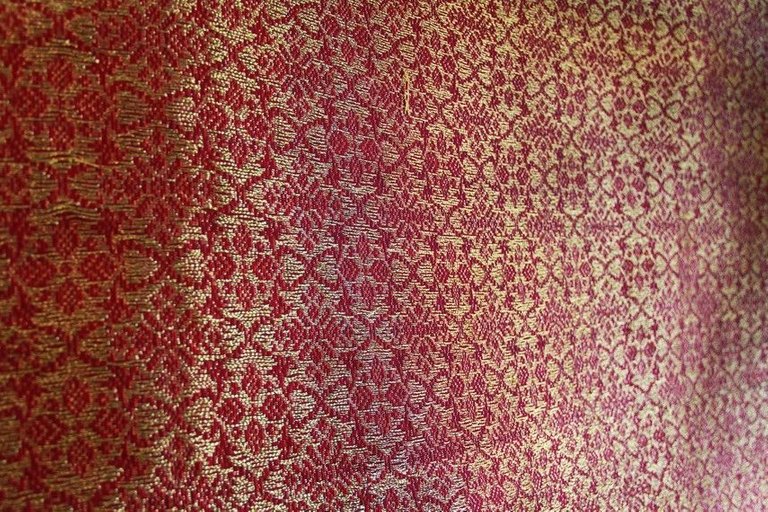
Indonesia itself has a variety of Indonesian traditional weaving crafts such as ikat, songket, and geringsing. Even a textile observer named Joseph Fisher in his book Threads of Tradition: Textiles of Indonesia and Serawak mentions if the richest and most diverse weaving products in the world are from Indonesia